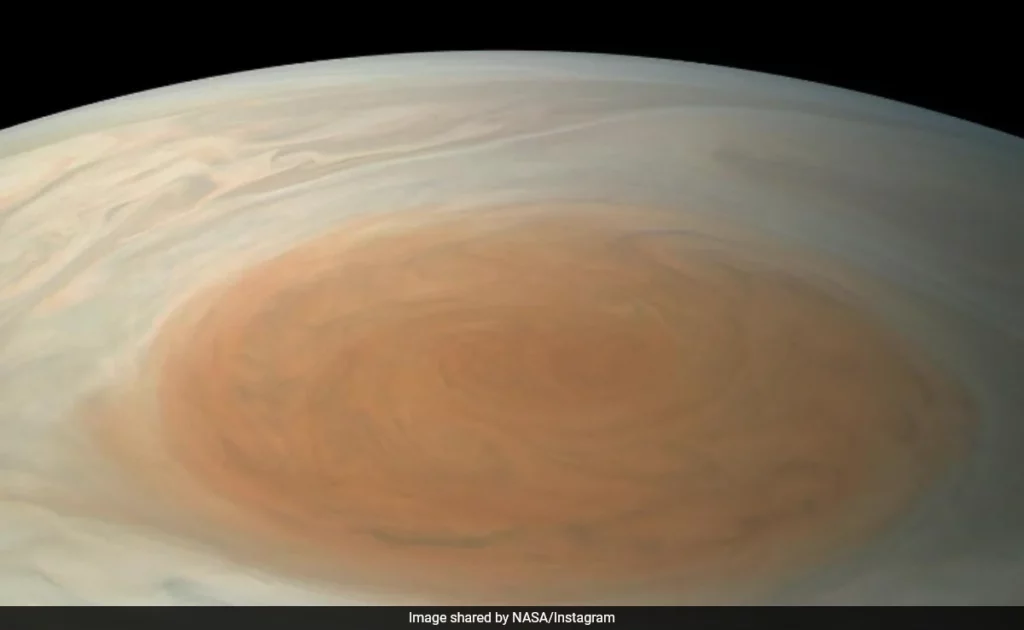NASA’s Juno Captures Enthralling Image of Jupiter’s Great Red Spot
NASA’s Juno spacecraft has delivered an extraordinary image of Jupiter’s iconic Great Red Spot, showcasing the giant storm that is more than twice the size of Earth. The image, captured from approximately 13,917 km away, highlights the storm’s vibrant colors and complex atmospheric dynamics. The Great Red Spot, a high-pressure region in Jupiter’s atmosphere, has been under observation for over 350 years and continues to fascinate scientists with its longevity and intensity. Despite observations of the storm’s gradual shrinking, it remains a dominant feature of Jupiter’s appearance.
Exploring the Depths of Jupiter’s Storm
Recent studies suggest the Great Red Spot extends about 200 miles beneath Jupiter’s cloud tops, offering insights into the storm’s structure and the dynamics of Jupiter’s atmosphere. With winds peaking at approximately 400 mph, the storm exemplifies the extreme conditions present on the gas giant. Juno’s mission, since its arrival in Jupiter’s orbit in 2016, has been pivotal in providing detailed observations of the planet, including its storms, magnetic field, and interior structure.
The Significance of Juno’s Findings
The ongoing analysis of Juno’s data enhances our understanding of Jupiter and the solar system at large. By studying such phenomena, scientists can draw parallels with atmospheric processes on Earth and other planets, deepening our knowledge of weather, climate, and planetary formation and evolution.






